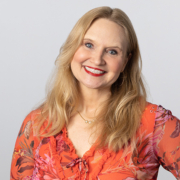Markets
From seeing to serving
Achieving equity in the healthcare setting means going beyond the cost-of-entry phrase, “I see you.” To make meaningful change, we must truthfully…

From seeing to serving
By Susan Perlbachs
“I see you.”
In 2020, this powerful, affirmatory phrase entered more and more social media feeds and conversations as the world sought to bring historically marginalized, discriminated against, or neglected communities into the forefront.
But achieving equity in the healthcare setting means going beyond the cost-of-entry phrase, “I see you.” To make meaningful change, we must truthfully say, “I understand you.” That means recognizing centuries-long systemic discrimination, racism and mistrust of the healthcare system. It means conducting inclusive focus groups and more expansive ethnographic research. It means utilizing co-creation methods with those who were rarely-before-considered in the “target audience” box on creative briefs. Above all, it means understanding that one size does not fit all; there are needs and insights we must uncover to make health equity a reality.
A recent news segment shared the findings of just-released data from the American Cancer Society. It celebrated that there has been a 33 percent decrease in the death rate from cancer since 1991. That is fantastic news – until we look at the cold, hard fact that the cancer death rate has risen 12 percent over that same time in the Black community. What struck me most in this story was that there was no discussion as to why this is the case. A classic example of, “I see you” without moving on to “I understand you.”
We have the privilege of working in an industry where we are able to lean in and spend time learning about the challenges, points of view, and day-to-day lives of those who will benefit from the treatments we promote. But that’s not just a privilege. It comes with responsibility. We have the responsibility to lean in, to ask those “whys,” to affect change.
I often hear opinions in our business caveated by the qualifier, “But, I’m an N of one.” The truth is that on the whole, we tend to be an N of represented versus under-represented communities. While we’re all making efforts to change that, it’s still the case. Pharma brands must continue to invest in research initiatives and emerging disciplines and roles to explore health disparities across social classes, races, genders, sexual orientations, and a variety of other intersecting factors. Only through increased understanding will pharma brands and agencies be equipped to create educational materials, programs, products and advertising that address disparities head-on and starts to close that gap in health outcomes overall.
Additionally, it will be essential for us to question our own biases when developing briefs or marketing materials, which includes taking steps to diversify our staff. This includes recruiting from diverse backgrounds and providing health literacy training so employees can understand the needs of a wide range of patient populations. With these steps, we will all have a better sense of how advertising, educational materials and patient support programs are impacting those who need health care the most.
Finally, while this is all certainly the right thing to do, it’s not all about altruism. It’s good business. Pharmaceutical companies that invest in neglected communities and marginalized populations can reap huge rewards. By investing in diverse research participants and expanding access to treatments, pharmaceutical companies can tap into markets with untapped potential. Additionally, they will gain valuable insights that help serve a wider range of customers. Not to mention, health equity initiatives show shareholders that they’re dedicated to social responsibility and health – an increasingly important factor when making investment decisions.
In 2023, it will be essential for pharma brands to ensure that their commitment to health equity is at the forefront of their business plans. Up to this point, we’ve been saying the words, “I see you” with the best of intentions. But seeing underrepresented communities doesn’t solve the issue of inequitable care. In 2023, we need to change from observation to action.
| Susan Perlbachs is chief creative officer, EVERSANA INTOUCH. |

Wittiest stocks:: Avalo Therapeutics Inc (NASDAQ:AVTX 0.00%), Nokia Corp ADR (NYSE:NOK 0.90%)
There are two main reasons why moving averages are useful in forex trading: moving averages help traders define trend recognize changes in trend. Now well…
Spellbinding stocks: LumiraDx Limited (NASDAQ:LMDX 4.62%), Transocean Ltd (NYSE:RIG -2.67%)
There are two main reasons why moving averages are useful in forex trading: moving averages help traders define trend recognize changes in trend. Now well…
Seducing stocks: Canoo Inc (NASDAQ:GOEV 5.43%), Ginkgo Bioworks Holdings Inc (NYSE:DNA -1.12%)
There are two main reasons why moving averages are useful in forex trading: moving averages help traders define trend recognize changes in trend. Now well…















